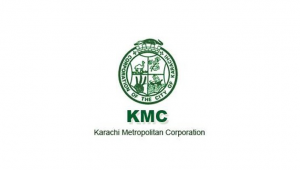The alleged vague policy, given by the Punjab Land Development Company (PLDC) for Ashiana Housing Project, has thrown the allottees into total confusion. They have been conveyed by the Bank of Punjab (BoP) now that they will have to pay a huge amount as mark-up on the proposed loan as per the bank policy, in addition to the actual amount of Rs 1,190,000. The PLDC loan facility policy, stated in the allotment letters of the Punjab government s much-hyped housing project, does not clearly mention the total amount to be paid by the allottees for their residences in case they seek a loan from the Bank of Punjab. The allottees were conveyed by the PLDC in black and white that they would have to pay Rs 1,190,000 in total including Rs 297,500 as down payment to get possession of their houses. It has been made mandatory for the allottees to pay the Punjab government the entire remaining amount of Rs 892,500 before getting possession of their residences.
In case they do not have the remaining amount in hand, they have been directed by the PLDC to seek a loan of Rs 892,500 from the BoP, which will be paid back in easy instalments of Rs 7,500 per month in 10 years. The open letter further states that the rules and loaning policy of the BoP will be applicable to the allottees who will seek the loan facility. The letter has not clearly mentioned the bank rules and the policy or the interest to be paid by the allottees. The PLDC issued a letter to the allottees on Sept 12, 2011 that their houses had almost been constructed and ready to be transferred to them. Therefore, they should deposit the remaining amount either through their own resources or through the BoP loan within a week, till Sept 20, 2011. The PLDC rules clearly say that if the allottees will fail to deposit the remaining amount, their allotments would be cancelled and transferred to other applicants, as they still have 20,000 applicants down the line, awaiting allotment.
In case the allotment of any allottee is cancelled, the government would deduct 10 per cent of total deposited down payment of Rs 297,500, which is almost Rs 90,000. When the allottees contacted the scheduled branch of BoP at MM Tower Gulberg III, they were told that their monthly instalment would be almost double the amount mentioned in the allotment letters, because the letters did not mention the bank interest. They were told that if they wanted to submit easy instalment of Rs 7,500 per month, they would have to pay instalments for 20 years. The disclosure has surprised the allottees, as majority of them had the understanding that they would have to pay monthly instalment of Rs 7500 for 10 years. But according to the new information, they will have to pay an additional amount of about Rs 900,000, which would raise the cost of the house from Rs 1,190,000 to almost Rs 2 million. It is worth mentioning here that majority of these employees get around Rs 20,000 per month as salary.
An allottee, Shahid, told The News that he was 58 years old and he had been told by the bank that his monthly instalment would be Rs 42,000 per month and it should be paid in two years, before he reaches superannuation. The bank official said they could not go beyond the time frame given to them by the State Bank of Pakistan. He said the BoP asked him to show his monthly income as Rs 90,000 if he wanted to avail the loan facility.
He said his monthly income was Rs 20,000 and he had qualified the criterion announced by the government for allotment in Ashiana Housing Project, but now he is confused as he could not pay Rs 42,000 per month as the instalment. However, Ashiana Housing Project Chairman Shaikh Allaudin when contacted claimed that the government had clearly mentioned each and every thing in the allotment letters. He said they had mentioned that the bank rules and policy would be applicable to the allottees in case they seek loan from the BoP. He said it would be a folly on the part of allottees if they thought that the bank would give them loans without mark-up. He said the allottees would have to pay the bank interest up to eight per cent while the remaining upper limit would be shared by the government.








